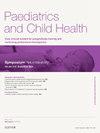胰高血糖素样肽-1 (GLP-1)受体激动剂在儿童糖尿病和肥胖症中的应用
Q3 Medicine
引用次数: 0
摘要
胰高血糖素样1受体激动剂(GLP-1 RAs)是一类合成肠促胰岛素类似物,最初用于治疗成人2型糖尿病患者的高血糖。它们的作用机制包括通过减少食欲和减缓胃排空来影响体重,这些已被用于肥胖症减肥的新适应症。最近,发表了令人信服的证据,证明它们对阻塞性睡眠呼吸暂停、糖尿病患者的肾功能以及可能的抗衰老有好处。对儿童的研究主要集中在儿童2型糖尿病和肥胖上,其疗效已导致10岁(2型糖尿病)和12岁(肥胖)的儿童获得许可。这些药物作为1型糖尿病附加治疗的早期研究显示出疗效,但存在显著的低血糖风险。本文将讨论GLP-1 RAs在儿童肥胖和2型糖尿病患病率上升的背景下的历史和发展,其在儿童中的有效性的证据,以及潜在的未来应用,如在1型糖尿病儿童中的应用。本文章由计算机程序翻译,如有差异,请以英文原文为准。
Glucagon-like peptide-1 (GLP-1) receptor agonists: applications in childhood diabetes and obesity
Glucagon-like 1 receptor agonists (GLP-1 RAs) are a class of synthetic incretin analogues that were originally developed to treat hyperglycaemia in adults with type 2 diabetes. Their mechanisms of action include effects on body weight through reducing appetite and slowing gastric emptying and these have been exploited in new indications for weight reduction in obesity. Most recently, convincing evidence has been published for their benefits in obstructive sleep apnoea, renal function in diabetes, and possibly anti-ageing. Studies in children have mainly focussed on childhood type 2 diabetes and obesity, and their efficacy has led to licensing for children from 10 years of age (type 2 diabetes) and 12 years (obesity). Early studies of these agents as add-on therapies in type 1 diabetes showed efficacy but significant risks of hypoglycaemia. This review will discuss the history and development of GLP-1 RAs in the context of the rising prevalence of childhood obesity and type 2 diabetes, the evidence for their effectiveness in children, and potential future applications such as in children with type 1 diabetes.
求助全文
通过发布文献求助,成功后即可免费获取论文全文。
去求助
来源期刊

Paediatrics and Child Health (United Kingdom)
Medicine-Pediatrics, Perinatology and Child Health
CiteScore
1.20
自引率
0.00%
发文量
70
 求助内容:
求助内容: 应助结果提醒方式:
应助结果提醒方式:


